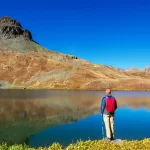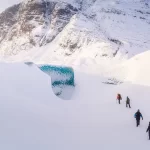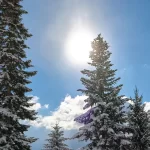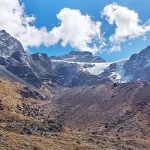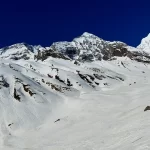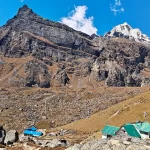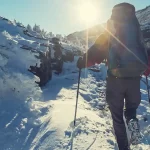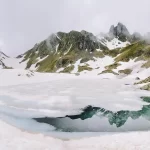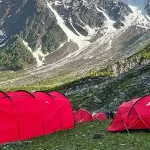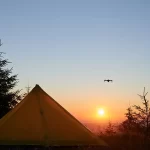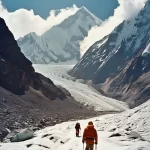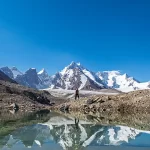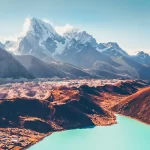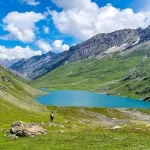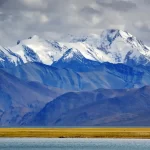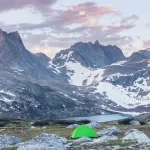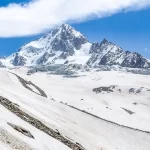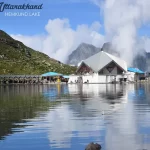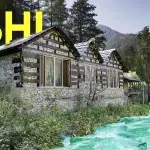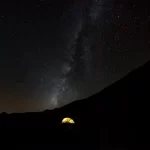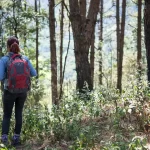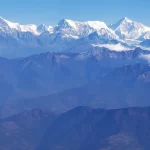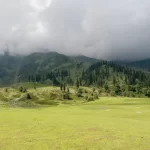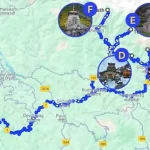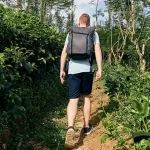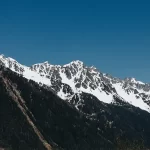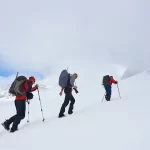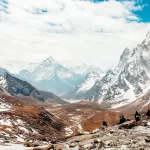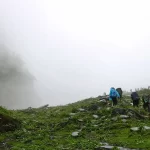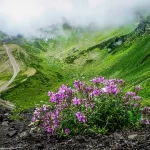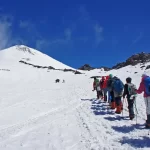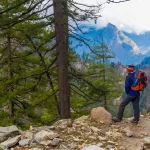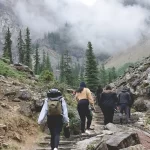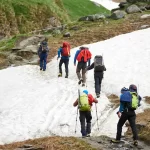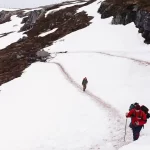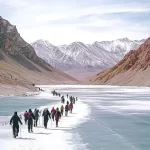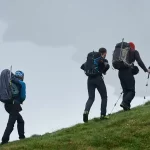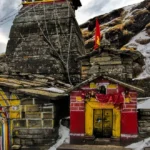Standing at 6,153 meters, Stok Kangri once drew every serious trekker’s gaze to the skies of Ladakh. Just a few kilometers from Leh, this iconic peak offered a rare chance to climb above 20,000 feet without ropes or ice walls. And while the route was non-technical, the challenge was always real. Cold nights, thin air, endless switchbacks, and a summit that demanded everything you had. Although Stok Kangri has been temporarily closed for trekking since 2020 to allow the region to recover ecologically, it remains one of the most iconic Himalayan expeditions ever attempted in Ladakh. This article captures the spirit of that climb, for those who’ve done it, dream of it, or hope for its reopening someday.
Why choose the Stok Kangri Trek?
Before its closure, Stok Kangri was the ultimate goal for trekkers looking to cross the psychological and physical barrier of 6,000 meters. It wasn’t just about the height. It was about pushing past limits, learning to climb in the dark, using crampons on glacier ice, and watching the world shrink beneath your feet as you stood on one of the highest non-technical summits in India. It was also incredibly accessible. You could fly into Leh, acclimatize, and start your journey to the top in Ladakh in under a week. Few peaks of this stature offered such a compact and direct path to the top of the world in Ladakh.
Trek Highlights –
- Leh – The high-altitude capital of Ladakh where your expedition begins. Spend time adjusting to 3,500 meters before hitting the trail.
- Stok Village – A quiet starting point framed by rugged mountains and barley fields. It sets the tone for a climb that gets serious quickly.
- Chang Ma and Mankorma – Base camps where you feel the first real cold. Surrounded by dry peaks and open skies, you sense the scale of the climb ahead.
- Stok Kangri Base Camp – Camp at 4,950 meters. This is where you rest, train, and mentally prepare for summit night.
- Glacier Traverse – Before dawn, you cross crevassed ice using crampons and headlamps. A surreal, silent experience under the stars.
- Summit Ridge – A steep, exposed ridgeline where every step is slow, the wind is sharp, and the sky feels just within reach.
Day-wise Itinerary
Day 1: Arrive in Leh
Rest and acclimatize. Explore Leh town, drink lots of water, and avoid overexertion.
Day 2: Acclimatization Day
Short hike to Shanti Stupa or nearby monasteries. Keep active but light.
Day 3: Drive to Stok Village, trek to Chang Ma
Drive to the trailhead and begin your ascent. The trail follows a dry riverbed and gently climbs to the first camp.
Day 4: Chang Ma to Mankorma
A short but crucial day. The altitude gain is gradual, giving your body time to adjust.
Day 5: Mankorma to Base Camp
A slightly tougher trail takes you to the expansive base camp. Stunning views of surrounding peaks and a preview of the summit route.
Day 6: Rest and Training Day
Acclimatization hike to a nearby ridge. Practice using crampons and walking on snow or ice.
Day 7: Summit Day
Start around midnight. Cross glaciers, navigate rocky ridges, and climb the final summit slope. Expect 10 to 14 hours round trip. Return to base camp utterly exhausted — and transformed.
Day 8: Reserve/Buffer Day
Useful for bad weather or health issues. Don’t underestimate how unpredictable summit days can be.
Day 9: Descend to Stok Village and Drive to Leh
Retrace your path, saying goodbye to the mountains as they fade behind you.
Difficulty Level and Preparation
Stok Kangri is a difficult expedition. Altitude is the biggest challenge. Even fit trekkers struggle above 6,000 meters due to low oxygen and exposure.
You must have
- At least one high-altitude trek above 4,500 meters
- Six to eight weeks of focused physical training
- Strong cardio base: running, swimming, or cycling
- Leg strength and core stability
- Mental grit to handle discomfort, cold, and long hours
- Training should include hiking with a loaded backpack, stair climbing, and interval workouts to build stamina.
Best Time to Visit
The best months for climbing Stok Kangri were mid-June to early September.
- June and July: More snow on the trail, colder, but beautiful
- August and early September: Stable weather, clearer skies, but rapid melting of glaciers.
Treks during the monsoon were risky, and post-September became too cold for safe climbing.
Permits and Guidelines
When open, the Stok Kangri region required Inner Line Permits and environment clearances. Due to over tourism and ecological stress, authorities closed the route in 2020.
As of now
- Trekking to the summit is officially banned.
- Only local hikes and lower trails around Stok Village are accessible.
- A future reopening may require stricter controls, group permits, and experienced guides.
- Always check with local authorities or registered trek operators for the latest updates before planning.
Accommodation and Essentials
Stay in guesthouses in Leh. On the trek, accommodation is in tents. Most expedition organizers provide tents, food, and technical gear at base camp.
Pack the following
- Trekking boots and crampons
- Insulated down jacket, thermals, fleece
- Gloves, balaclava, sunglasses, sunblock
- Trekking poles and backpack
- Headlamp with extra batteries
- Sleeping bag rated below -10°C
- Water bottles, dry snacks, and personal meds
Stok Kangri was more than just a summit. It was a gateway into the world of high-altitude mountaineering, into personal resilience, and into the rare stillness only thin air brings.
For many, it was their first true Himalayan expedition. For others, it was a peak that humbled them. And for all, it was unforgettable. Whether or not the trail opens again, the legacy of Stok Kangri lives on, in stories, summit photos, and the quiet courage it drew out of those who dared to climb. If and when it reopens, one thing’s certain: the mountain will still be waiting, unchanged, unmoved, and ready to meet you at the edge of the sky.


